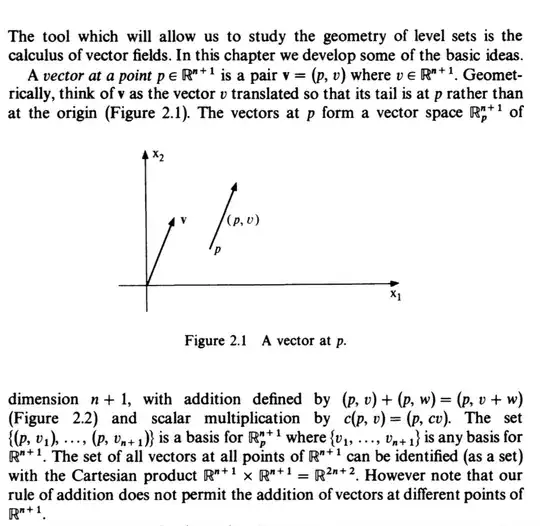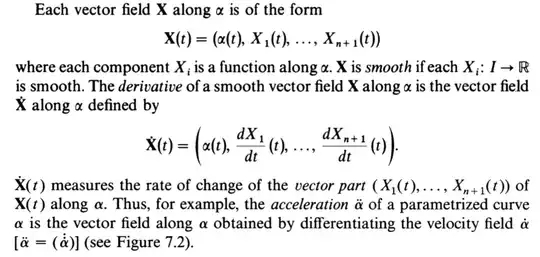I am studying Thorpe's Elementary Topics in Differential Geometry, an undergrad level book. On this site, there are probably lots of technical answers for such a question, I am hoping for an answer that is commensurate with the level of this book.
Very early on in the book (Chapter 2, Vector Fields), he introduces the notion of vectors attached to a point, and says vectors attached to different points cannot be added.

Then a few pages later, he defines a vector field for the first time

For the next few chapters I do not come across any notion of adding vectors attached to different points, but then, in Chapter 7, Geodesics, I come across this:


My question: Doesn't the very definition of the derivatives of $X_1(t),\dotsc $ here require the addition of vectors at neighbouring points to find the limit ? As in $X_1(t+ h)$ and $X_1(t)$ are attached at $ \alpha(t+h)$ and $\alpha(t)$, so how am I allowed to take the limit of $(X_1(t+h) - X_1(t))/h$ for $ h \longrightarrow 0$. I want to understand, how is it justified to write down derivatives of vector fields without allowing vector algebra of vectors attached to different points ?
If I were to be told, that $\mathbf{Y}(t)$ is a field defined at $\alpha(t)$ by the derivatives $\dfrac{d X_i(t)}{dt}$, I have no objection. Do I simply take $\dot{\mathbf{X}}(t) = \mathbf{Y}(t)$ as a definition for now, without trying to interpret $\dot{\mathbf{X}}(t)$ as a derivative of $\mathbf{X}(t)$ ?
The following questions are related, but they seem to be at a higher level. Resolving a contradiction: defining smooth vector fields if we cannot compare vectors at different tangent spaces?